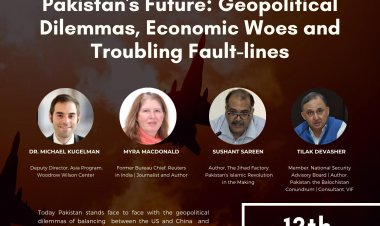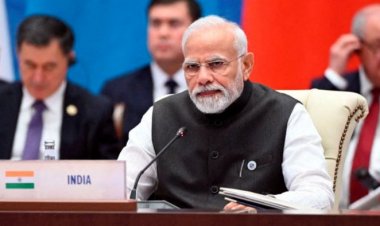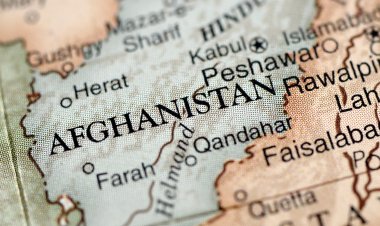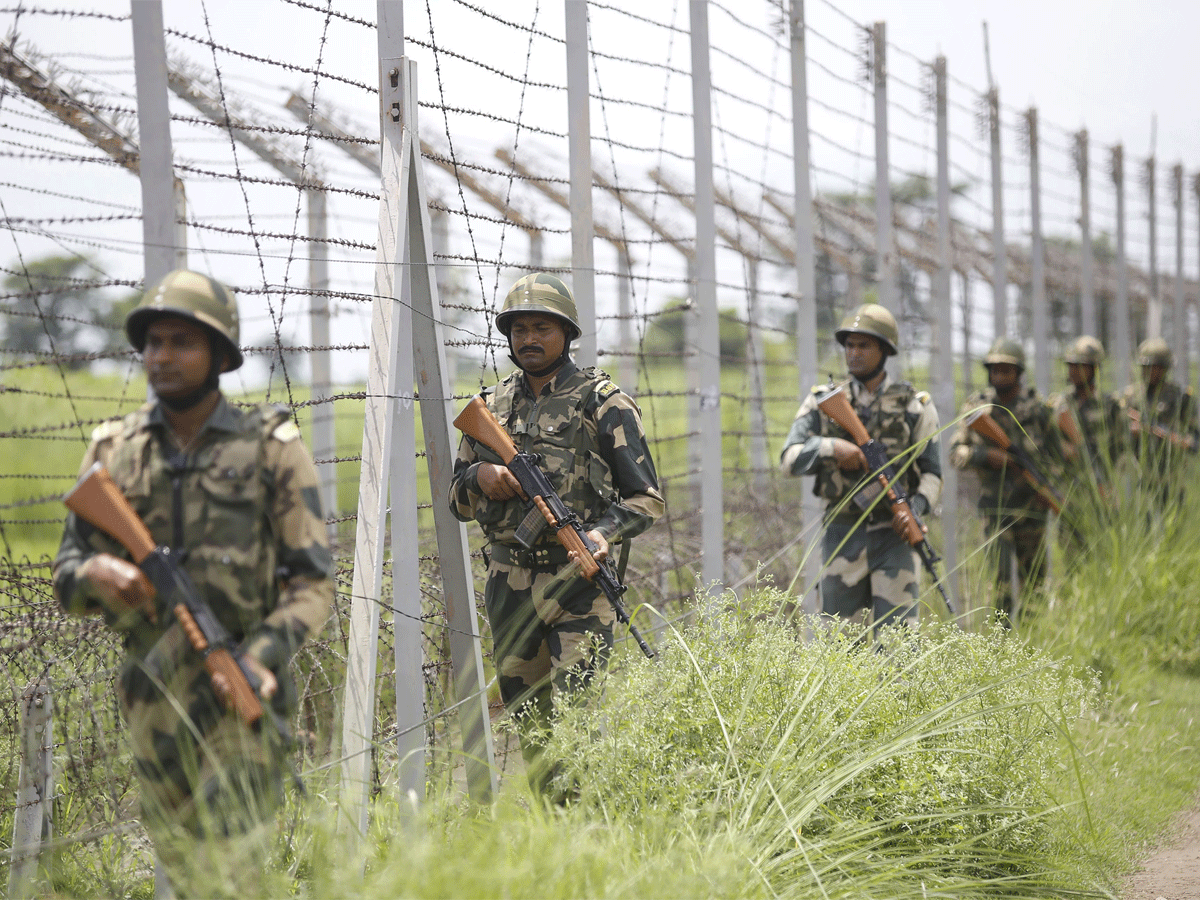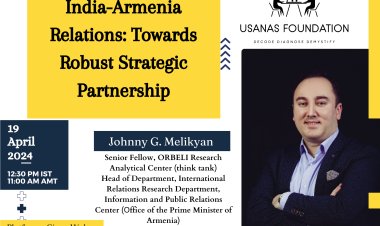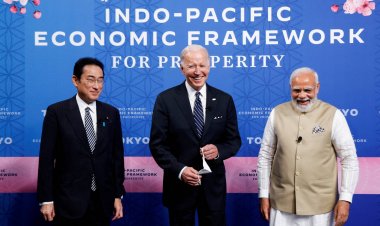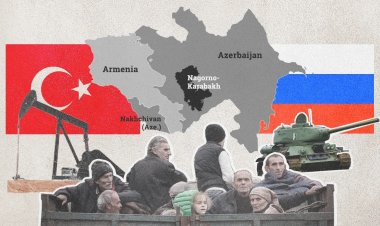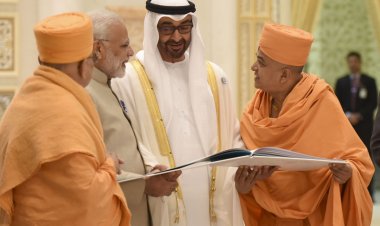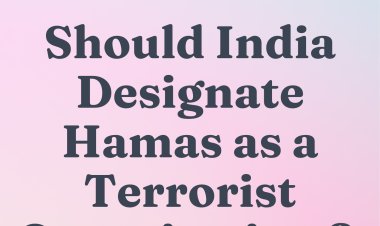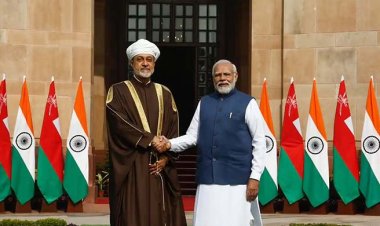Ideas on India: Some thoughts on bringing India upwards
Some thoughts on bringing India upwards - even faster. A starting point for these thoughts is in defense. But defense is like insurance, you want it, but it should not be relied on to make you rich. So defense is only a corner of the story.
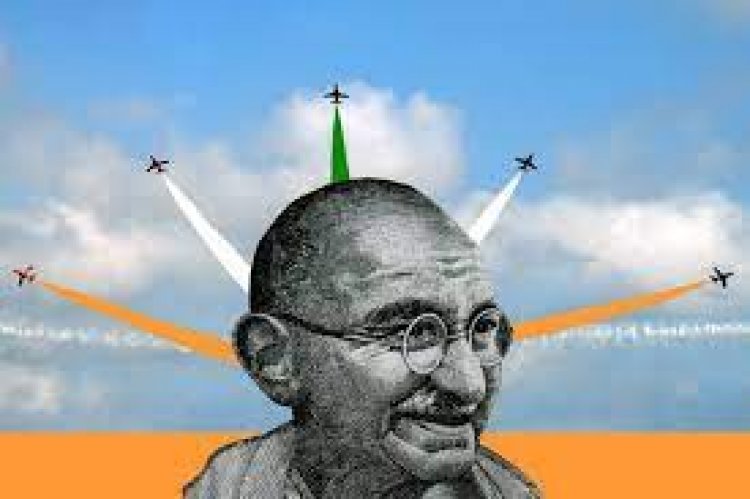
Opinion
By Karsten Riise
Some thoughts on bringing India upwards - even faster.
A starting point for these thoughts is in defense. But defense is like insurance, you want it, but it should not be relied on to make you rich. So defense is only a corner of the story.
Achievement
India has achieved a milestone.
(1) Establishing India's own aerospace defense industrial ecosystem.
(2) At a level comparable to France.
That is remarkable of India because the aerospace defense is so demanding - not just in one sector - but in a huge range of sectors like computers, radars, materials, engines, and so many more things. And to run it, one needs not just an advanced airplane, but also advanced weapons, systems - and a system of systems, integrating air warfare with land- and sea warfare plus space.
With the Tejas, India has not only produced a fighter jet fulfilling its function, but India has also produced its ecosystem in a range of the most advanced industries.
ISRO testifies that India takes aerospace on a promising path even to Space. India has now placed herself well in one of the most difficult games. Too much spending is no advantage. Compared to slow, money-wasting projects like F-35, Zumwalt, NASA, and Blue Origin, ISRO has taught India to go far with limited funds.
The question is - how to take this another big step up?
Challenges
One challenge is China. China is innovating extremely fast and is currently a step ahead. India must innovate even faster to catch up - not with where China is today, but with what China will achieve soon. The second challenge is Indian self-reliance. India wants to be self-reliant in aerospace technology - and that is wise. This, however, puts even more pressure on Indian companies and ingenuity - which is good.
The third challenge is technology partners. India needs technology partners to move fast forward - not just to the top but also beyond the top. France cannot deliver it entirely. The US cannot and, for various reasons, should not. Therefore, it is important how to construct the right network of, preferably long-term and reliable, tech partners for India. the fourth challenge is the decline of the US. The USA is about to lose Taiwan.[1] That will create a major breakdown in the global position of the US.[2]
Depending on the USA could be very bad for India. First, India does not want to depend on a power whose global position is on the verge of a breakdown. Second, India does not want to depend on a country whose military tech is completely overpriced – and often overrated. Third, India does not want new products delayed by decades because of systematic delays from partners such as the USA. But fourthly, India should be open to buying concrete components - preferable as a transfer of existing technology for India to build on. China did that successfully - India, of course, can and will too. Creating an indigenous technological base, industry, and education gives a competitive advantage to India because it plays into the competitive price level of India's high-quality education.
In 2021, India will have a 3.3.% share of the World's GDP. But measured in purchase power (PPP), India in 2021 will have more than double of that, namely a share of 7.2% of the World's PPP. And around 2030, India will fast up to nearly 10% of the World's PPP, and the USA will be down to around 14%. In other words, measured in economic capacity, from 2030 India will possess more than two-thirds the economic output capacity of the USA. Around 2040, India's PPP will be roughly equal to the USA – if not before, due to a US financial collapse from overspending and economic mismanagement.
Though India's 3.3% of global GDP is on par with the UK in 2021, this is still less than half the full power of India's economy of 7.2% global purchase power. India must transition, change the economic and power game in her favour, to play out her full 7.2% (in future 10%+) economic capacity in the World.[3] Competitive indigenous industries, including defense, are a key to that. China does it, and South Korea does it. India must do it too.
The fifth challenge is the limitations of India's economy. Modern weapons systems are extremely costly. Developing World-leading defense products in space, cyberspace, nuclear, conventional, computers, aerospace, naval, underwater, and so on and on ... consume immensely big budgets which go away from productive investments in development.
Possible solutions
Priorities
Naval technologies - especially aircraft carriers and nuclear submarines - with their dependent systems, weapons, etc., are extremely costly.[4]
Aircraft carriers are not only immensely costly. With "carrier-killer" long-range missiles directed from Space, even the most advanced carriers look outdated like dinosaurs. Long-range combat aircraft need no aircraft carriers – from bases on land, they can reach more than 3,500 km through the Ocean and neighboring lands. India might waste billions in trying to build more aircraft carriers, ending up with mediocre aircraft carriers, widely bought from foreign suppliers, and still having a product that may be outdated. Nuclear submarines may have more remaining shelf-life than aircraft carriers - but perhaps not long enough. Suppose new sensors make the oceans "transparent" up to 600-1000 m depth within the next ten years - which is quite probable. In that case, nuclear submarines may be even less survivable than surface ships because they will be slower and have less situational awareness in the air domain. These big ships may end up as "white elephants" - pride, prestige perhaps for the show, but not for practical use. India should not tie her pride to superficial symbols. India cannot afford to waste billions.
In fact, India needs billions for infrastructure, education, and development - and too high defense costs will eat this up. Otherwise, India may end like the USA – well-armed by internally degraded.
India might therefore consider also letting the airforce be the prime instrument of naval superiority around India. My idea is that India could stop building more capital ships like aircraft carriers and instead invest more into aircraft – to rely more on aircraft in naval missions.
Land-Naval Combat Aircraft
The Indian concept aircraft HAL AMCA is a genius idea.[5]
The AMCA could well be superior to any existing combat aircraft, including F-22, F-35, J-20, J-31, Su-35, and Su-57. France, Germany, and the EU have not got anything comparable. They were combining great flight performance and great avionics with a high level of stealth. Two engines for reliability over vast oceans, supercruise to overcome long distances fast, larger weapons capability, high top-speed and service ceiling, great manoeuvrability, and higher stealth than F-35. Probably more stealth than J-20, J-35, Su-35, and Su-57. And more capable avionics than F-22. If India can pull off the AMCA, India could become the leading combat aircraft World Champion over China, Russia, the USA, and the EU.
There are only a few things to mention – but they are important.
First, having a flying prototype in 2024 or 2025 is good – but production starting in 2035 is far too late, and further delays risk making India a loser. Other sources mention the year 2029 as the target production date, which is more appropriate.[6]
Later targets dates will threaten more delays, the strategic situation will change, and competing countries incl. China may stay one cycle in front of India. India needs to implement strategies how to double the speed of the generation cycle in combat aircraft. More money is not the solution. Better project management. Better supplier strategies. Strategic technological imports. Improved use of computing, not only in design but in the whole development and production cycle. Research and education. Things like that.
Speed in the product cycle is key in military competition. Once India has learned to churn out a new AMCA at lightning speed (2028), the next super aircraft after the AMCA will come out even faster.
Second, avionics are extremely important. Where the F-35 fails is in putting good leading avionics into a badly designed aircraft. The F-22 is the opposite: A great aircraft design, but not splendid avionics. The AMCA looks to be a great aircraft design. But avionics must be superior too.
The third is range. The range is becoming extremely important, especially for the naval air war. Air refuelling is obsolete. Air tankers are big ducks begging to be shot down by long-range missiles. Air refuelling slows down the mission speed and sortie rates. Air refuelling creates unnecessary restrictions on mission flexibility, depending upon having an air tanker available on the planned mission path. Air tankers are mostly unnecessary and expensive assets, requiring hugely expensive investments. A few could be good to have for special cases, but not for regular long-range missions.
An AMCA combat range of 3,500 km (like Su-35) is simply a requirement. Better 4,000 km. With this kind of combat range, India can save the cost of an additional aircraft carrier and invest the money into a more potent air force.
Development policies
Development speed for society is key. Right now, China is developing faster than India. China’s GDP is currently five times bigger than India’s, and at the current trajectory, China’s lead will be a factor of 6 over India within a decade. India develops quite fast – but India needs to speed up even more.
India must accelerate economic development now. There are two factors here. One factor is to increase India’s total factor productivity – that is, how fast does India’s society innovate and improve productivity. The other factor is to further increase India’s rate of investments.
Higher levels of investment can only come from lowering consumption – private consumption and public consumption, incl. military consumption. Oversized military expenditures are a public consumption that comes at the cost of higher economic investments. Though military technology can be used for civilian innovation too, but too high military expenditures slow overall growth. Too high military expenditures today diminish military and civilian capacity in the future.
In total factor productivity, from 1949, India introduced a long range of “socialist” rules to slow down private initiatives.[7] In the 1990s, India set a lot of energy free by simply relaxing some but far from all of the hampering set of rules and bureaucracy. Much too many energies are still stifled in India by complicated rules and heavy bureaucracy. The Goods and Services Tax (GST) is an example. The GST replaced an old, extremely complex taxation with a new but still much too complex and slow administrative system.[8]
India’s “self-sufficiency” is an ideology that may hold India back in areas where India should move faster by being more internationally competitive, exporting more, and jump-speed through strategic knowledge imports. This requires cutting red tape and higher levels of strategic economic planning. Japan,[9] Taiwan, South Korea,[10] and Mainland China[11] are World Class examples to learn excellent public-private planning. It is opening the Indian economy in strategic ways - not dictated by the US or the World Bank but learning how East Asia acquired hyper speed in development.
Peace
My suggestion is for India to find a final peaceful solution with Pakistan and China. Seventy-four years of war must be enough. It consumes India. The de-facto borders will not move by more than meters anyway.
Pakistan knows that conflict with India is consuming development. Pakistan wants peace.[12] China has singled interest in working with India. China has no interest in conflict with India.[13] Peace will give India the room to speed up development.
Pakistan via Afghanistan and Iran has the strategic location India needs for land-bridge connections with Eurasia incl. the EU. In extension, Afghanistan has already singled intentions to become an “economic corridor”.[14]
Only through peace with Pakistan can India fully integrate logistically via Afghanistan and Iran to the huge Afro-Eurasian continent. Freight trains are cheaper than air transport and faster than ships. Freight trains run daily and it takes 13-16 days to cover the 11,000 km between Chongqing and Duisburg, Germany. Shipping the same route takes 36 days or 2-3 times longer. Now freight trains must run daily between Hyderabad and Duisburg too – via Pakistan.
Networking - and trade
Cultivate strategic partnerships even more.
Will France in the future have the defense tech which India needs? If so, part of the future network. What about Airbus – the EU cooperation in air defense? Russia? Long ago, Russia was the closest friend of India. Why not anymore? Russia needs India, especially in computing, and Russia has technologies which India needs too, not least in defense, nuclear, and infrastructure. India will, for a time, need jet engines for its aircraft production. Russia can supply India.
ASEAN? What happened to India in RCEP? Was it all about China? Or did India lose self-confidence relative to ASEAN? India should remain self-confident and go into the game. Korea is a major partner to cultivate. Vietnam is a success story to learn from.
China? Yes, of course. Competition should not hold India back. Do not stop the Belt & Road Initiative (BRI) – build into it.[15] China has organised most of the rail-bridge to Europe. Expand it to India.
EU is moving too slow because of self-made problems. But the EU still has a lot to offer. Deal much more with the EU - but on Indian terms. Not getting lost in nitty-gritty protectionism but keeping overall big lines in trade strategy. Protect farmers – open for industry and services.
Africa is strategic in the future. No fast-growing country can avoid dealing intensively with Africa. The US does not care about Africa. The EU says it cares - but in reality, the EU doesn't care. Russia wants to engage with Africa but does not really know how to. But China knows and does care about engaging closely with Africa. India has a lot of potential by learning to engage closely with a united Africa.
Disclaimer: This paper is the author’s individual scholastic contribution and does not necessarily reflect the organisation’s viewpoint.
Notes:
[1] See Lyle J. Goldstein from the US Naval War College and Oriana Skylar Mastro in Zoom conference:
The Shifting Military Balance Across the Taiwan Strait
National Committee on U.S. China-Relations, 28 July 2021
https://youtu.be/HWUB9JSQhLw?t=617
Also:
Karsten Riise: China-US Balance p.6-7 incl. references notes, 23 February 2021
https://drive.google.com/file/d/1j-XjxtIXmMG0neVVWohBrRhntYyRJoaF/view
Karsten Riise: Coming War On Taiwan, 12 August 2021
https://drive.google.com/file/d/1iiAkJCOzFuaqm3GnKdBi_sZ8LmDB23QB/view
[2] Karsten Riise: US Pacific Break-Down, 17 September 2021
https://drive.google.com/file/d/1j42KFMOyE7miF6DwykgV6dWvUk0xBbX0/view
[3] Figures based on IMF’s World Economic Outlook 2021/April, Karsten Riise calculation and projection 2030-40.
[4] Rick Joe: A Tale of 2 Navies: India and China’s Current Carrier and Escort Procurement (pt. 2 of 3).
The Diplomat, 4 August 2021.
https://thediplomat.com/2021/08/a-tale-of-2-navies-india-and-chinas-current-carrier-and-escort-procurement/
Also:
Rick Joe: A Tale of 2 Navies: India and China’s Carrier Airwing Development (pt. 3 of 3).
The Diplomat, 11 October 2021
https://thediplomat.com/2021/10/a-tale-of-2-navies-india-and-chinas-carrier-airwing-development/
[5] https://www.youtube.com/watch?v=iPv44AKJeyM
[6] https://www.youtube.com/watch?v=W4YfqpOPUg8
[7] Atul Kohli, State Directed Development, State Directed Development: Political Power and Industrialization in the Global Periphery, 2004 – see Part III on India.
https://www.amazon.com/State-Directed-Development-Political-Industrialization-Periphery/dp/0521545250/ref=sr_1_1?dchild=1&keywords=9780521545259&linkCode=qs&qid=1633808776&s=books&sr=1-1
[8] Sanjiv Shanaran: GST’s problems are worsened by shoddy planning and poor implementation at the start
Times of India, 30 July 2020
https://timesofindia.indiatimes.com/blogs/cash-flow/gsts-problems-are-worsened-by-shoddy-planning-and-poor-implementation-at-the-start/
[9] Chalmers Johnson: MITI and the Japanese Miracle – The Growth of Industrial Policy, 1925-1975
Stanford 1982.
https://www.amazon.com/s?k=9780804765602&i=stripbooks&linkCode=qs
[10] Atul Kohli: State Directed Development -Political Power and Industrialization in the Global Periphery. Cambridge 2004. See Part I on Korea.
https://www.amazon.com/State-Directed-Development-Political-Industrialization-Periphery/dp/0521545250/ref=sr_1_1?dchild=1&keywords=9780521545259&linkCode=qs&qid=1633808776&s=books&sr=1-1
Also:
Ha-Joon Chang: Kicking Away the Ladder – Development Strategy in Historical Perspective. London 2002.
https://www.amazon.com/Kicking-Away-Ladder-Development-Perspective/dp/1843310279/ref=sr_1_1?dchild=1&keywords=kicking+away+the+ladder&qid=1634054740&s=books&sr=1-1
[11] Yuen Yuen Ang: How China Escaped the Poverty Trap (Cornell Studies in Political Economy). Ithaca 2016.
https://www.amazon.com/Escaped-Poverty-Cornell-Studies-Political-ebook/dp/B01K4O2ZRM/ref=sr_1_2?dchild=1&keywords=yuen+yuen+ang&qid=1634055235&s=books&sr=1-2
[12] Pakistan Wants Peaceful, Cooperative Ties with India: PM Imran.
The Express Tribune, 21 May 2021.
https://tribune.com.pk/story/2300970/pakistan-wants-peaceful-cooperative-ties-with-india-pm-imran
[13] Yu Hongjun: Emerging Countries Like China and India Can Lead Global Governance.
Global Times, 2 June 2021.
https://www.globaltimes.cn/page/202106/1225180.shtml
[14] Talk to Al Jazeera interview with Taliban Foreign Minister spokesperson Abdul Qahar Balkhi.
Al Jazeera, 9 october 2021.
https://youtu.be/3Eu-r2XdtVU?t=1287
Also:
Rajab Taieb: New Chapter Opened in Afghanistan, World Relations: Muttaqi.
“Afghanistan has sent the message of positive relationship with the whole world. We do not want to interfere in any country’s internal affairs, and we expect the same from other countries to not interfere in our internal affairs,” he said.
Further:
“The Islamic Emirate is determined to fully utilize the capacity of Afghanistan being a crossroad and be part of an economic revolution,” Muttaqi added.
ToloNEWS, 12 October 2021
https://tolonews.com/afghanistan-174997
[15] Zorawar Daulet Singh: Managing India-China Relations in a Changing Neighborhood
Centre for Policy Research, 4 June 2019.
https://cprindia.org/policy-challenge/7848/foreign-policy-and-national-security

